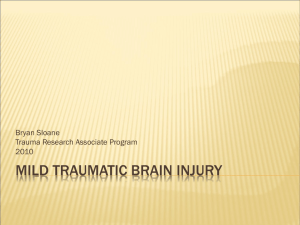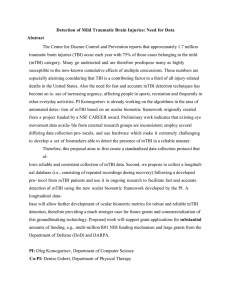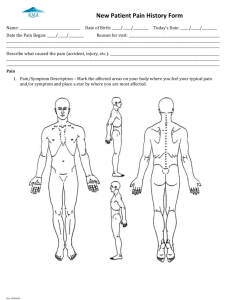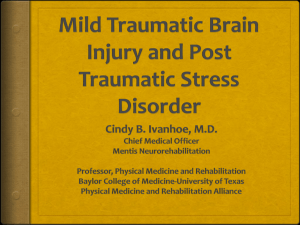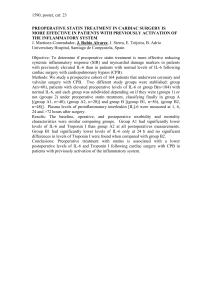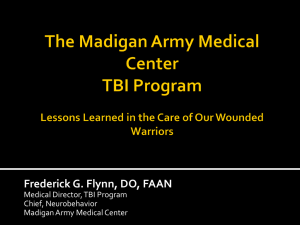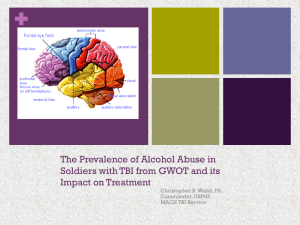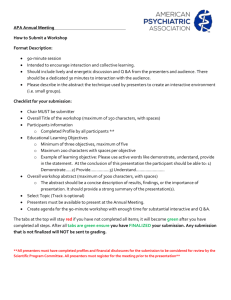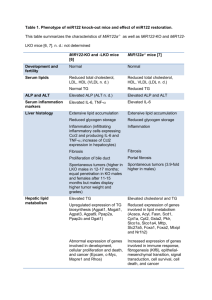IL-6 INHIBITION ENHANCES RECOVERY OF MOTOR
advertisement
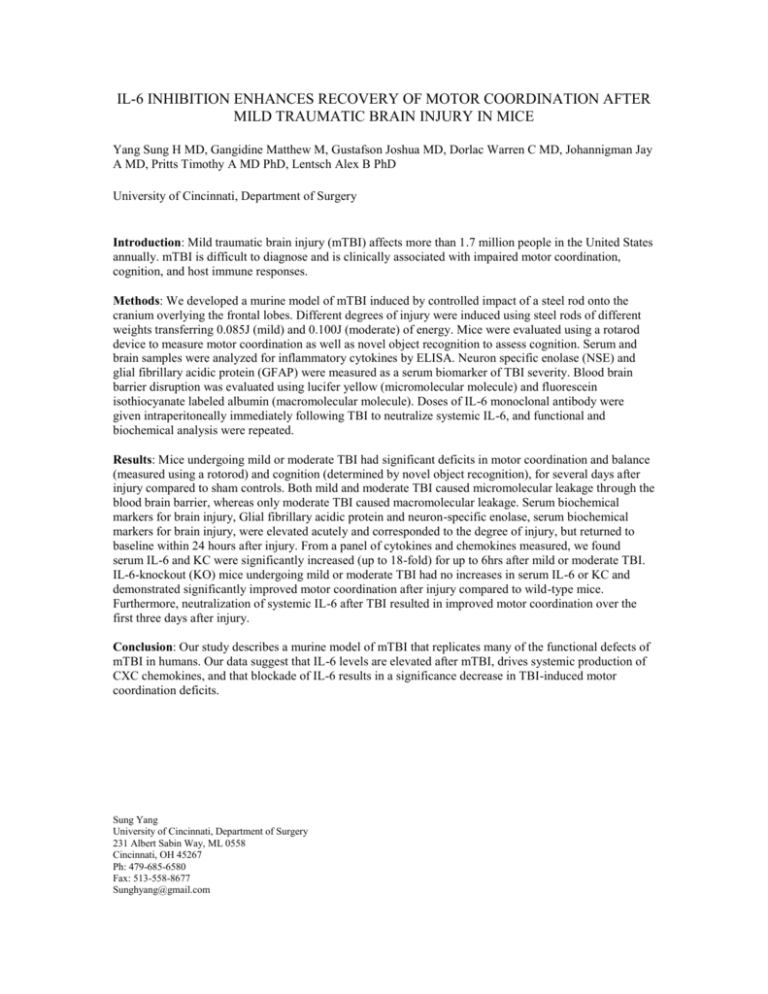
IL-6 INHIBITION ENHANCES RECOVERY OF MOTOR COORDINATION AFTER MILD TRAUMATIC BRAIN INJURY IN MICE Yang Sung H MD, Gangidine Matthew M, Gustafson Joshua MD, Dorlac Warren C MD, Johannigman Jay A MD, Pritts Timothy A MD PhD, Lentsch Alex B PhD University of Cincinnati, Department of Surgery Introduction: Mild traumatic brain injury (mTBI) affects more than 1.7 million people in the United States annually. mTBI is difficult to diagnose and is clinically associated with impaired motor coordination, cognition, and host immune responses. Methods: We developed a murine model of mTBI induced by controlled impact of a steel rod onto the cranium overlying the frontal lobes. Different degrees of injury were induced using steel rods of different weights transferring 0.085J (mild) and 0.100J (moderate) of energy. Mice were evaluated using a rotarod device to measure motor coordination as well as novel object recognition to assess cognition. Serum and brain samples were analyzed for inflammatory cytokines by ELISA. Neuron specific enolase (NSE) and glial fibrillary acidic protein (GFAP) were measured as a serum biomarker of TBI severity. Blood brain barrier disruption was evaluated using lucifer yellow (micromolecular molecule) and fluorescein isothiocyanate labeled albumin (macromolecular molecule). Doses of IL-6 monoclonal antibody were given intraperitoneally immediately following TBI to neutralize systemic IL-6, and functional and biochemical analysis were repeated. Results: Mice undergoing mild or moderate TBI had significant deficits in motor coordination and balance (measured using a rotorod) and cognition (determined by novel object recognition), for several days after injury compared to sham controls. Both mild and moderate TBI caused micromolecular leakage through the blood brain barrier, whereas only moderate TBI caused macromolecular leakage. Serum biochemical markers for brain injury, Glial fibrillary acidic protein and neuron-specific enolase, serum biochemical markers for brain injury, were elevated acutely and corresponded to the degree of injury, but returned to baseline within 24 hours after injury. From a panel of cytokines and chemokines measured, we found serum IL-6 and KC were significantly increased (up to 18-fold) for up to 6hrs after mild or moderate TBI. IL-6-knockout (KO) mice undergoing mild or moderate TBI had no increases in serum IL-6 or KC and demonstrated significantly improved motor coordination after injury compared to wild-type mice. Furthermore, neutralization of systemic IL-6 after TBI resulted in improved motor coordination over the first three days after injury. Conclusion: Our study describes a murine model of mTBI that replicates many of the functional defects of mTBI in humans. Our data suggest that IL-6 levels are elevated after mTBI, drives systemic production of CXC chemokines, and that blockade of IL-6 results in a significance decrease in TBI-induced motor coordination deficits. Sung Yang University of Cincinnati, Department of Surgery 231 Albert Sabin Way, ML 0558 Cincinnati, OH 45267 Ph: 479-685-6580 Fax: 513-558-8677 Sunghyang@gmail.com

